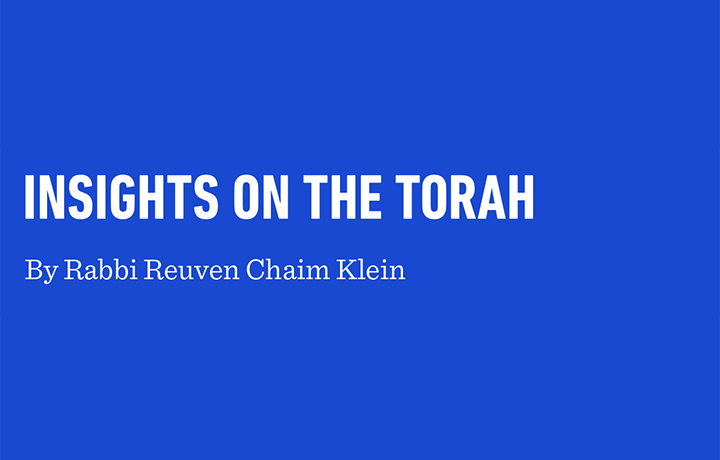Balak: An Asinine Essay
Part 1
The famous scene of Balaam and his talking donkey serves as our springboard for a discussion about various Hebrew words for “donkey” in the Bible and beyond. In antiquity, donkeys were common beasts of burden, often prized for their endurance. Although the common word for “donkey” in Biblical Hebrew is chamor, technically speaking, Balaam’s donkey is actually called an aton (Num. 22:21–23, 22:25, 22:27–30, 22:32–33). Besides for chamor and aton, this essay also discusses the words pere, ayir, yeimim, and sayach that are likewise associated with the so-called Equus asinus family to which donkeys belong. As this essay makes clear, these different Hebrew words are not simply synonyms but rather refer to different members of the broader donkey family.
Before we turn to the Hebrew words at the core of this essay, we begin by surveying English words for this animal that will help us later on in defining our terms. In English, we have many overlapping names for what is often just called the domestic donkey. Modern science identifies the donkey as a subspecies of the African wild ass (Equus africanus), and it should be noted that historically the more common word for that animal was ass (from the Latin asinus). Indeed, ass has cognates across the Indo-European family, like the Greek onos (and possibly even the Sumerian anse). Other cognates that appear in English include onager (a Middle English word for a “wild donkey”), easel (a wooden structure that looks like a donkey), and asinine (literally, “like a donkey” but colloquially referring to somebody or something “stupid”).
By contrast, the English word donkey is actually comparatively late (first attested to in the 1780s) and is of uncertain etymology, with no clear cognates in other languages. Because the word ass in English developed a pejorative, and even offensive, meaning, it became less popular over the 18th and 19th centuries until the word donkey gradually became the more popular word. Rabbi Ernest Klein in his etymological dictionary of English proposes that donkey is derived from the Old English word dun/dunn (or dwn in Welsh) which means “brown,” with the k and y elements serving as double diminutives. He further notes that the form of the Modern English word donkey was influenced by the spelling of the English word monkey (which ends in -onkey, just like donkey does). By the way, the Old English dunn is the first element in the originally Gaelic personal name Duncan (which literally means “brown head”).
For our purposes, it is important to note that English also has distinct words for donkeys based on their gender and age. An adult male donkey is called a jack or jackass, and an adult female donkey is called a jenny or jennet. A young donkey of either sex is simply called a foal (which is a general term also used for young animals other than donkeys). There are also two terms used in reference to hybrid animals that descend from donkey parentage but are not of full donkey lineage: a mule is the offspring of a male donkey mated with a female horse, while a hinny (from the Latin hinnus) results from a male horse bred to a female donkey.
The first time that the Hebrew word chamor appears in the Bible is when Pharaoh gifted Abraham various livestock and slaves as reparations for the ordeal of having kidnapping Sarah (Gen. 13:16). Subsequently, the word chamor appears close to one hundred times throughout the Bible. Although grammatically the word chamor is male-gendered, Radak in his Michlol (Shaar Dikduk Ha’Poalim, as well as in his comments to II Sam. 19:27) writes that the word chamor can refer to a donkey of either sex.
Rabbi Yaakov Tzvi Mecklenburg (HaKtav VeHaKabbalah to Lev. 22:28) adds that when talking about the commandment of redeeming the firstborn donkey, the Torah uses the term peter chamor (Ex. 13:13, 34:20), implying that the foal exited the womb of a chamor. Since the mother is always a female chamor, this usage supports Radak’s assertion that in Biblical Hebrew, chamor is a unisexual term.
Outside of the Bible, the word chamor also appears many times in the Mishnah, but for our purposes it is apposite to note that Mishnaic Hebrew once uses a feminine form of the word chamor—chamorah—in reference to a female donkey (jenny) that gives birth (Bechorot 1:2). This word is clearly derived from chamor, with the appendage of the feminine hey suffix. It is noteworthy that this word never appears in the Bible, and it only appears once in the Mishnah. In the Talmud, the word chamorah appears several more times (TalmudYerushalmi Brachot 8:5, Kilayim 8:3, Maaser Sheini 3:6, Pesachim 4:8, Talmud Bavli Moed Katan 12a, AvodahZarah 20b, Bechorot 20a). Thus, while in Biblical Hebrew chamor can refer to either a male or female donkey, Rabbinic Hebrew coined the term chamorah in order to more clearly differentiate between the two.
The Hebrew chamor is such a basic word that it has cognates in all the major Semitic languages, such as the Aramaic/Syriac chamara, Ugaritic hmr, Arabic himar, Akkadian imeru. That said, the Hebrew lexicographers all agree that chamor derives from the Hebrew triliteral root chet-mem-reish, which yields words that mean “donkey,” “wine,” “brown,” “clay/mortar/cement/material/asphalt/bitumen,” “pile,” and a unit of measuring area (chomer). In an earlier essay (“Words for Wine Part 2,” March 2022), I cited Rabbi Aharon Marcus’ contention that the core meaning of this three-letter root is “brown,” so the word chamor actually invokes the reddish-brownish hue of many donkeys. I also discussed in that essay how chamor as a pack animal represents the utterly materialistic aspects of creation, hence the connection to the “clay/mortar/cement/material” meaning of this root. Others explain the word chamor as related to the “wine” meaning of this root, as the dumb donkey’s intellectual capacity parallels that of a drunkard fumbling in his own drunken stupor. [For more about the connection between donkeys and the color red, see “Seeing Red Part 3” (Apr. 2025).]
I thought it would be pertinent to point out that the personal name Chamor (Hamor) appears thirteen times in the Bible in reference to the father of Shechem (Gen. 33–34, Josh. 24:32, Jud. 9:28).
To be continued…n
This article has been excerpted from its original. Please visit 5TJT.com to read the full version.
Rabbi Reuven Chaim Klein is an author and freelance researcher based in Beitar Illit. He studied in Yeshiva Gedolah of Los Angeles, the Mir Yeshiva in Jerusalem, and Beth Medrash Govoha of America in Lakewood, and received semichah from leading rabbis. He also holds an MA in Jewish Education from Middlesex University/London School of Jewish Studies. Rabbi Klein authored two popular books that were published by Mosaica Press, as well as countless scholarly articles published in various venues. His articles on Hebrew synonyms are commissioned by Yeshivas Ohr Somayach in Jerusalem and have appeared on their website since 2016.














